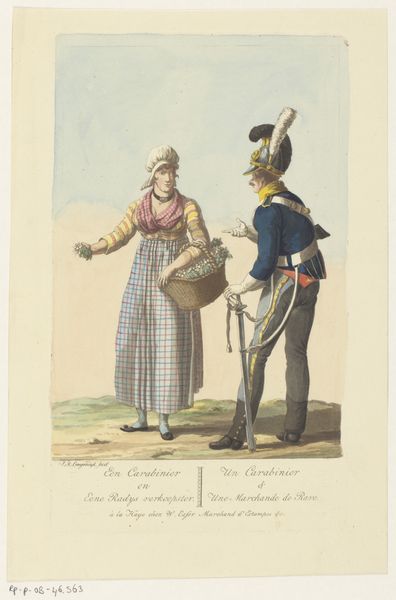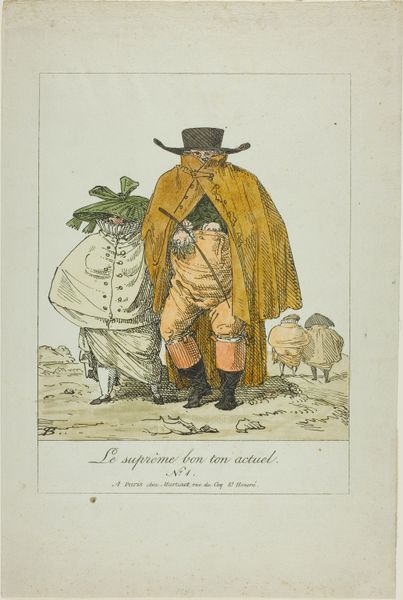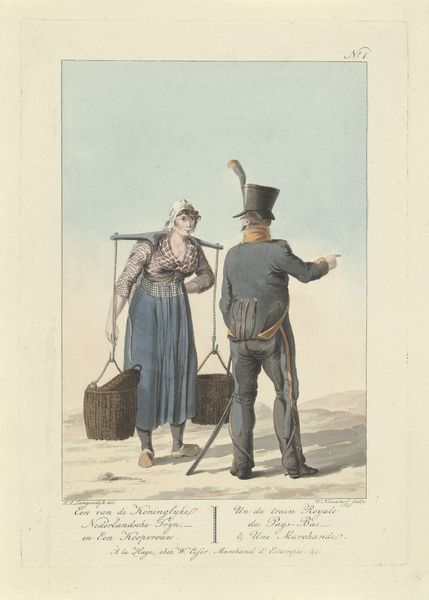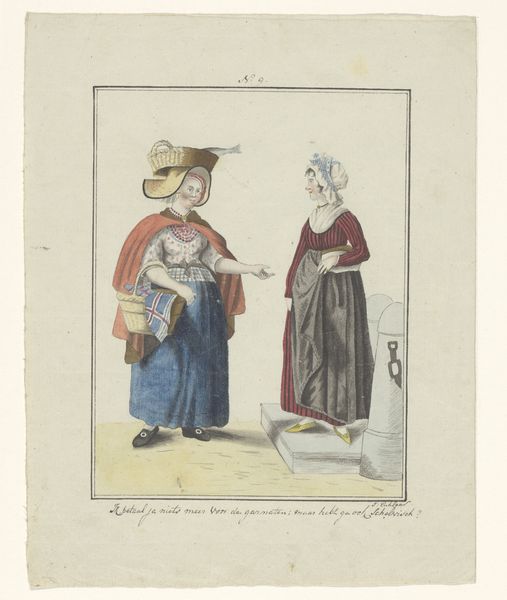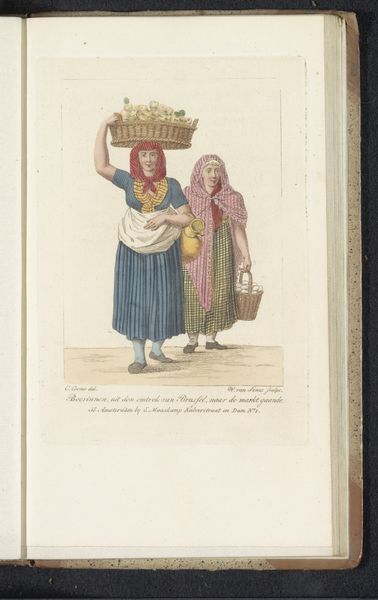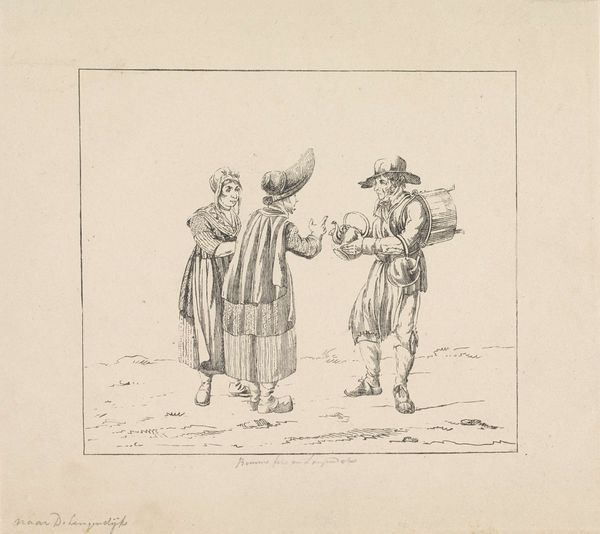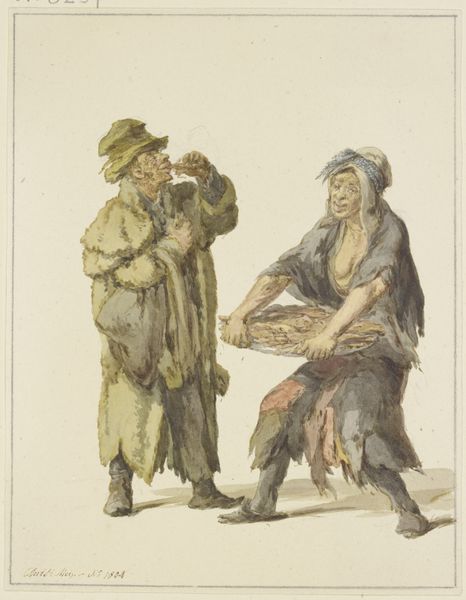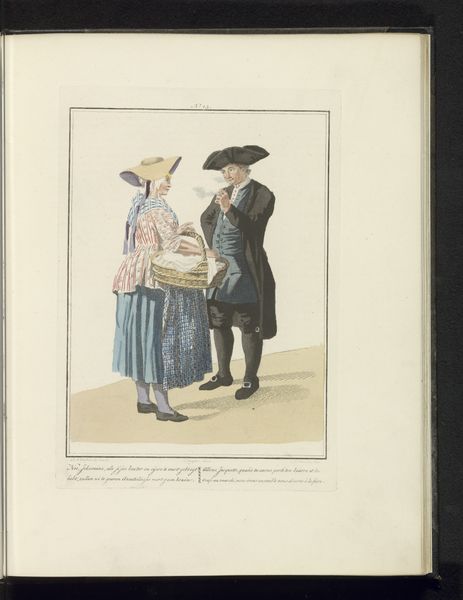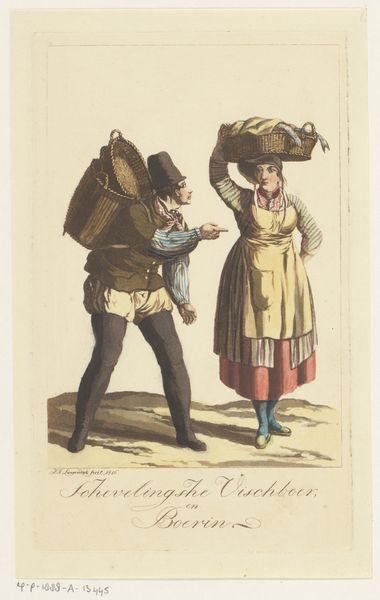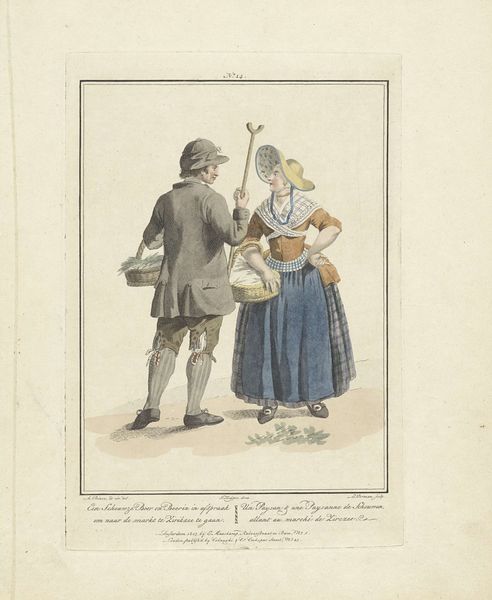
watercolor
#
portrait
#
figuration
#
watercolor
#
romanticism
#
watercolour illustration
#
genre-painting
#
watercolor
Dimensions: height 222 mm, width 135 mm
Copyright: Rijks Museum: Open Domain
Editor: This watercolor, "Vlaardingse visserstypen," from 1816 by Jan Anthonie Langendijk Dzn, depicts what seems to be a fisherman and a fisherwoman. I’m struck by the artist's attention to detail in rendering their clothing; it seems almost ethnographic. How do you interpret this work? Curator: This work, made in the Romantic era, exemplifies a growing interest in portraying ordinary people. These weren't simply portraits but representations of types, almost like actors playing a role. It makes me consider the public role of art here; were these images intended as records, or something else? Editor: That's interesting. "Types"—so you're suggesting they aren't just individuals, but representatives of a particular group or community? Curator: Precisely. The Dutch were grappling with their national identity at this time after the Napoleonic period. Images like this, displayed in public exhibitions or reproduced as prints, contributed to shaping ideas about Dutch character, about who *they* were. Does the setting give you any hints? Editor: I see. I don't notice a clear setting—the background is pretty minimal. Maybe this wasn't about location specifically? Curator: Exactly! This neutrality suggests that this image is not so much a landscape genre scene as it is an exploration of social identities and cultural representation, packaged neatly for the consumption of the urban middle class in particular. Editor: That gives me a different perspective. It's less a slice of life and more a constructed idea about that life for outsiders. I hadn't thought about the socio-political forces at play. Curator: These images don’t merely *reflect* society, but participate in its making. It leaves me thinking about the visual politics embedded in supposedly straightforward depictions of "everyday life."
Comments
No comments
Be the first to comment and join the conversation on the ultimate creative platform.




